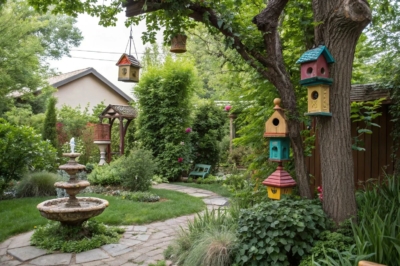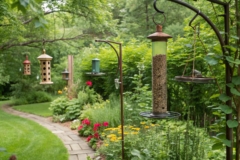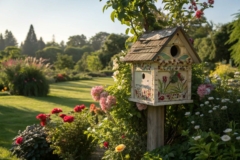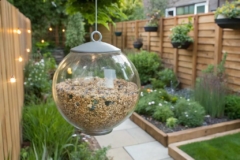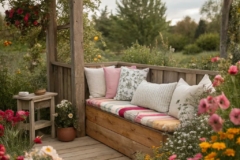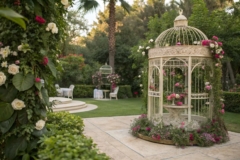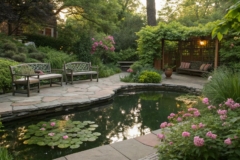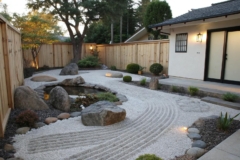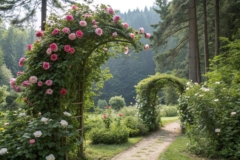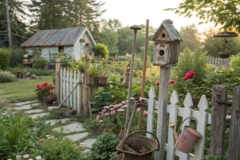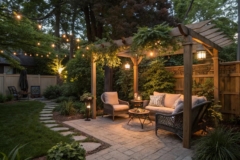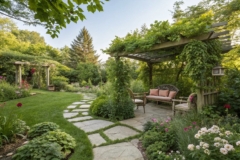1. Craft a Cozy Birdhouse Cluster
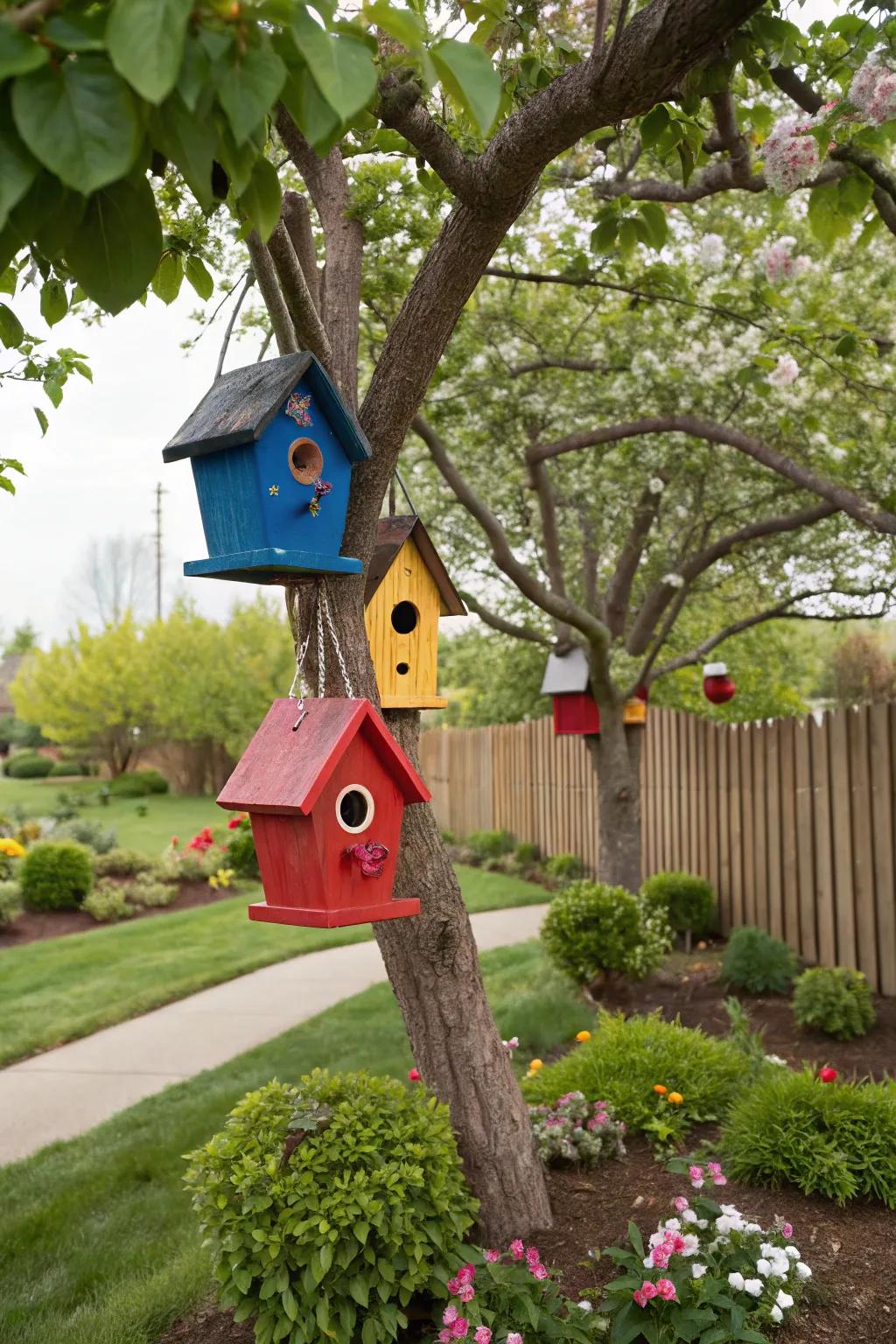
Why settle for one when you can have a cluster of birdhouses? Arrange several birdhouses at varying heights to attract different bird species. I’ve found that a mix of shapes and colors really brings a charming touch to my garden.
Some handy options:
- Colorful Wooden Birdhouses: Add vibrancy to your garden with colorful wooden birdhouses, offering charm and variety.
- Hanging Birdhouse Hooks: Secure your birdhouses effortlessly with durable hanging hooks. Suitable for tree branches.
- Birdhouse Paint Set: Customize your birdhouses with a versatile paint set. Enhance your garden’s aesthetic appeal.
2. Create a Bird Observation Area
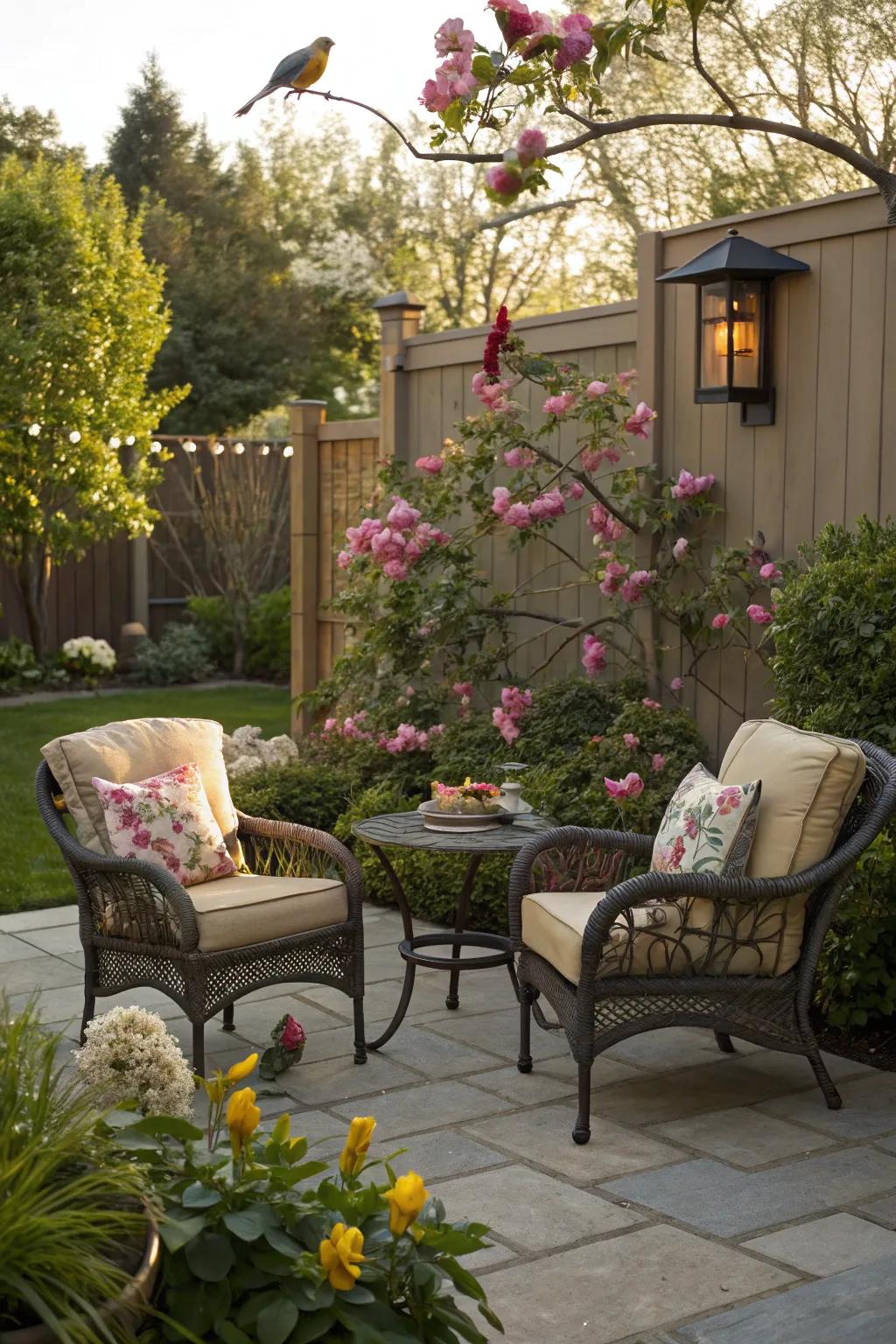
Set up a comfy seating area where you can relax and observe bird activity. My favorite spot includes a bench surrounded by flowers, offering peace and a perfect view.
These products might help:
- Outdoor Wicker Patio Chair Set: Relax and enjoy nature with this stylish patio chair set, enhancing your garden retreat.
- Decorative Outdoor Cushion Set: Add comfort and color with these weather-resistant cushions, perfect for bird watching afternoons.
- Solar Garden Light Fixture: Illuminate your bird sanctuary with eco-friendly solar lights, enhancing evening ambiance.
3. Invite Birds with Seasonal Planting

Plan a seasonal planting schedule to ensure your garden offers food and shelter all year. In my experience, a garden that changes with the seasons keeps birds coming back.
Consider these options:
- Assorted Wildflower Seed Packets: Plant diverse wildflowers to attract and sustain a variety of birds throughout the seasons.
- Bird-Friendly Shrub Selection: Add bird-friendly shrubs for year-round shelter and food sources in your garden.
- Seasonal Planting Guide Book: Use this planting guide to create a garden that changes with the seasons, attracting birds.
4. Decorate with Folk Art Birdhouses
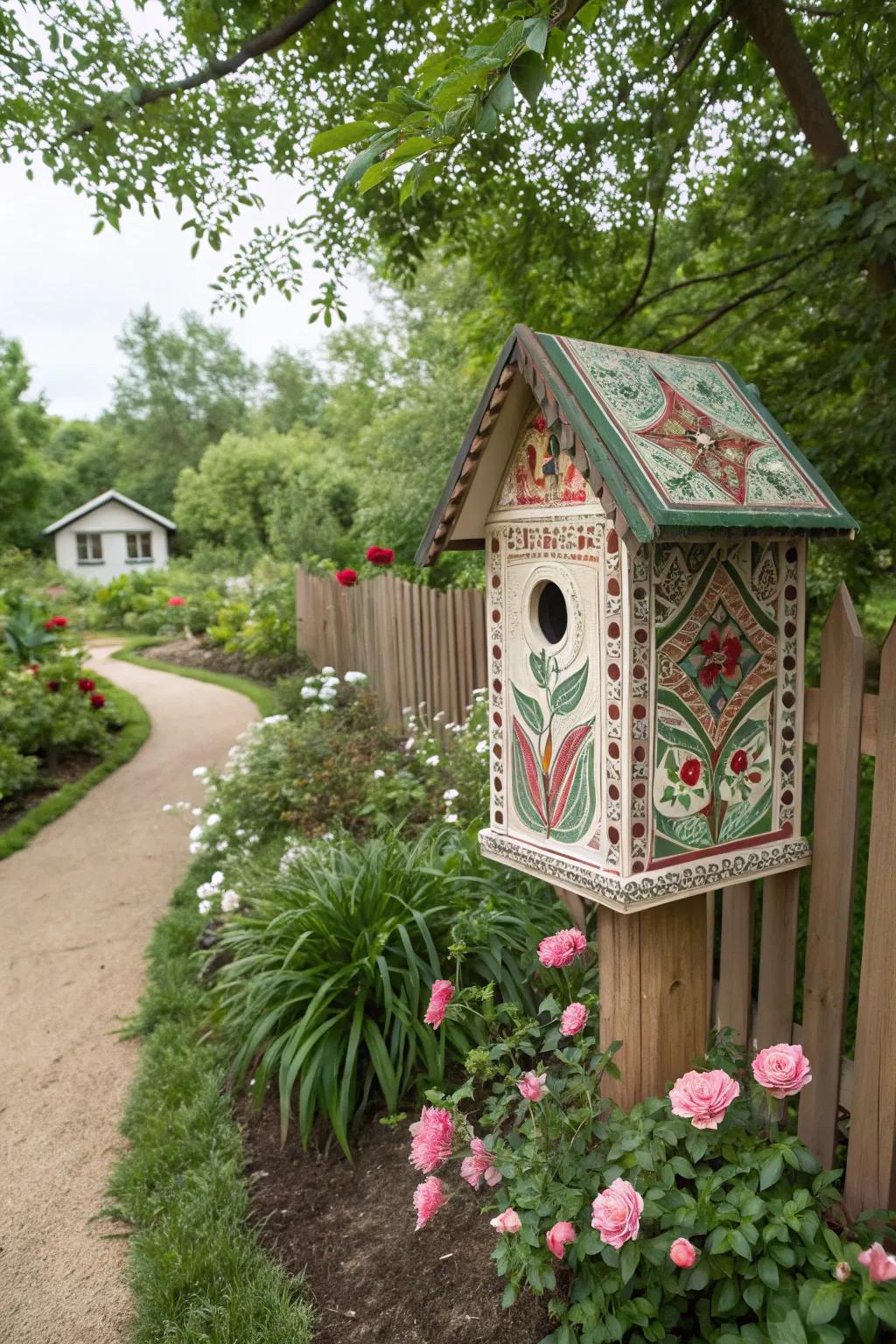
Paint folk art-inspired birdhouses for a unique and historical touch. While bright colors are fun, remember to balance creativity with natural tones to prevent attracting predators.
Check if these fit your needs:
- Handcrafted Wooden Birdhouse Kit: Get creative with a wooden birdhouse kit and design your own unique garden masterpiece.
- Outdoor Safe Acrylic Paint Set: Add vibrant and lasting color to your birdhouses with this weather-resistant paint set.
- Decorative Folk Art Birdhouse: Enhance your garden’s charm with a beautifully crafted folk art birdhouse ready to hang.
5. Design a Multi-Layered Habitat
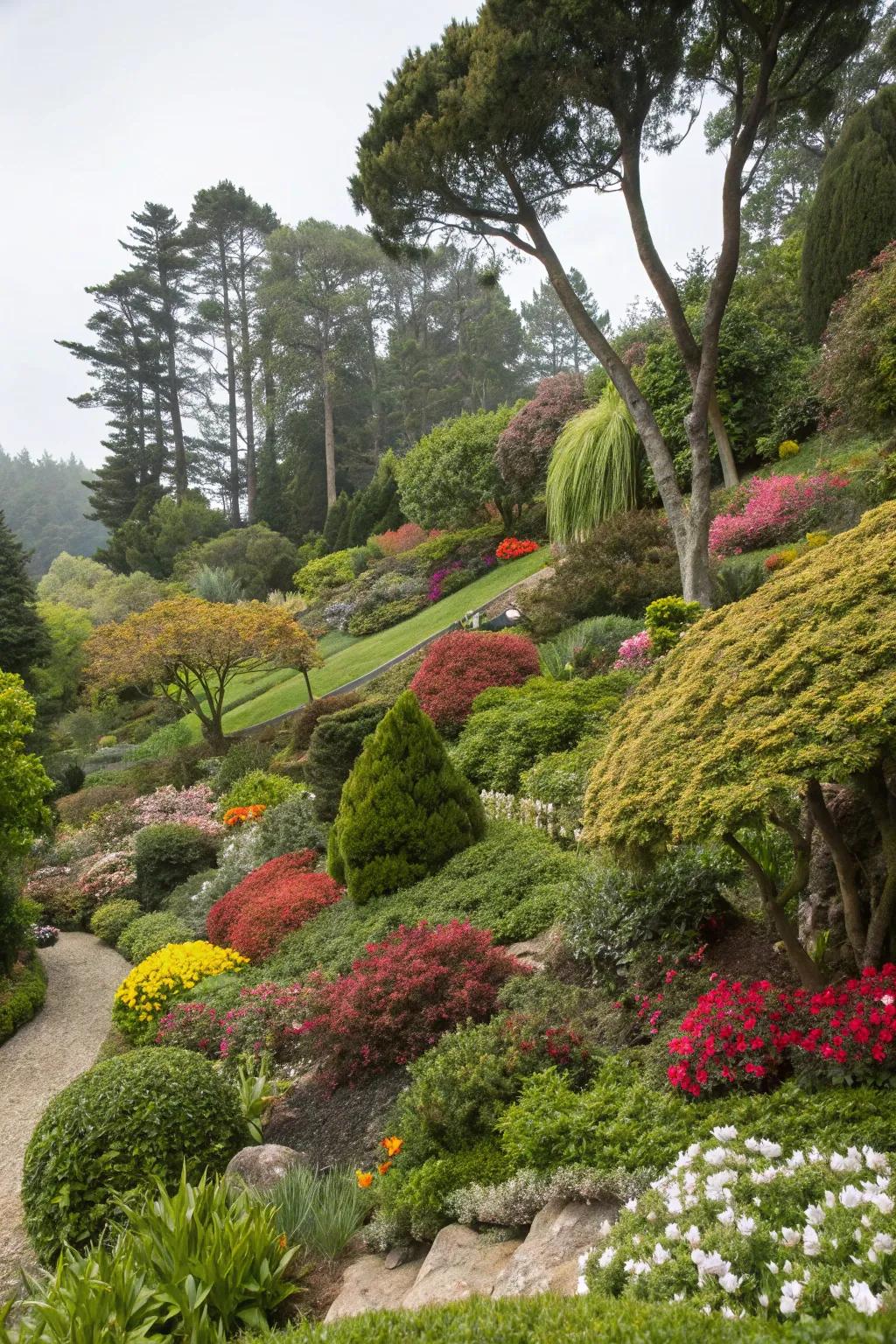
Mimic natural habitats by creating a multi-layered garden with trees, shrubs, and ground cover. This diverse structure attracts a variety of bird species.
Check these products out:
- Bird-Friendly Shrubs Pack: Enhance your garden with bird-friendly shrubs to offer food and shelter for various species.
- Bird Bath and Fountain: Install a bird bath for a refreshing spot to attract and sustain visiting birds.
- Garden Ground Cover Seeds: Plant ground cover to create a lush, protective layer supporting insects and small wildlife.
6. Create a Bird-Friendly Hedge

A dense hedge offers birds protection from predators and harsh weather. My garden hedge doubles as a windbreak and nesting site, making it a versatile addition.
Some ideas to consider:
- Hedge Trimmer: Shape your hedge perfectly to provide optimal shelter for birds in your garden.
- Bird Nesting Boxes: Enhance your hedge as a nesting site with bird boxes for additional safe havens.
- Natural Fertilizer: Promote lush hedge growth with organic fertilizer, ensuring a robust habitat for birds.
7. Create a Rustic Birdfeeder
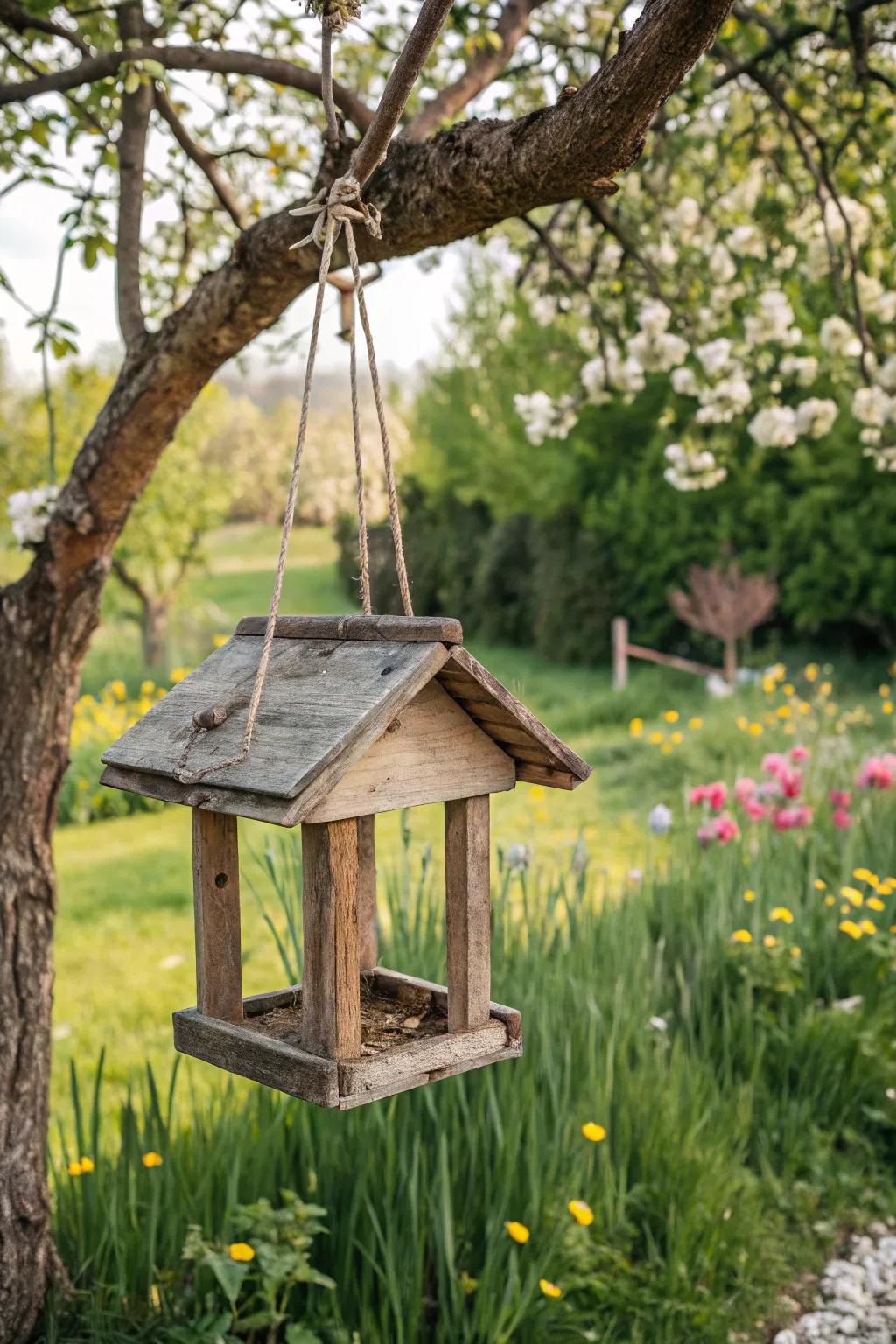
A rustic birdfeeder made from reclaimed wood can be both functional and stylish. I crafted mine using leftover wood, and it’s become a favorite spot for cardinals and finches.
Give these a look:
- Reclaimed Wood Birdhouse Kit: Assemble a charming bird feeder with this easy-to-use reclaimed wood kit. Perfect for beginners.
- Natural Jute Twine: Secure your rustic birdfeeder effortlessly with durable natural jute twine. Eco-friendly and strong.
- Eco-Friendly Wood Sealer: Protect your birdfeeder from the elements with this eco-friendly wood sealer. Safe for wildlife.
8. Incorporate a Bubbling Water Feature
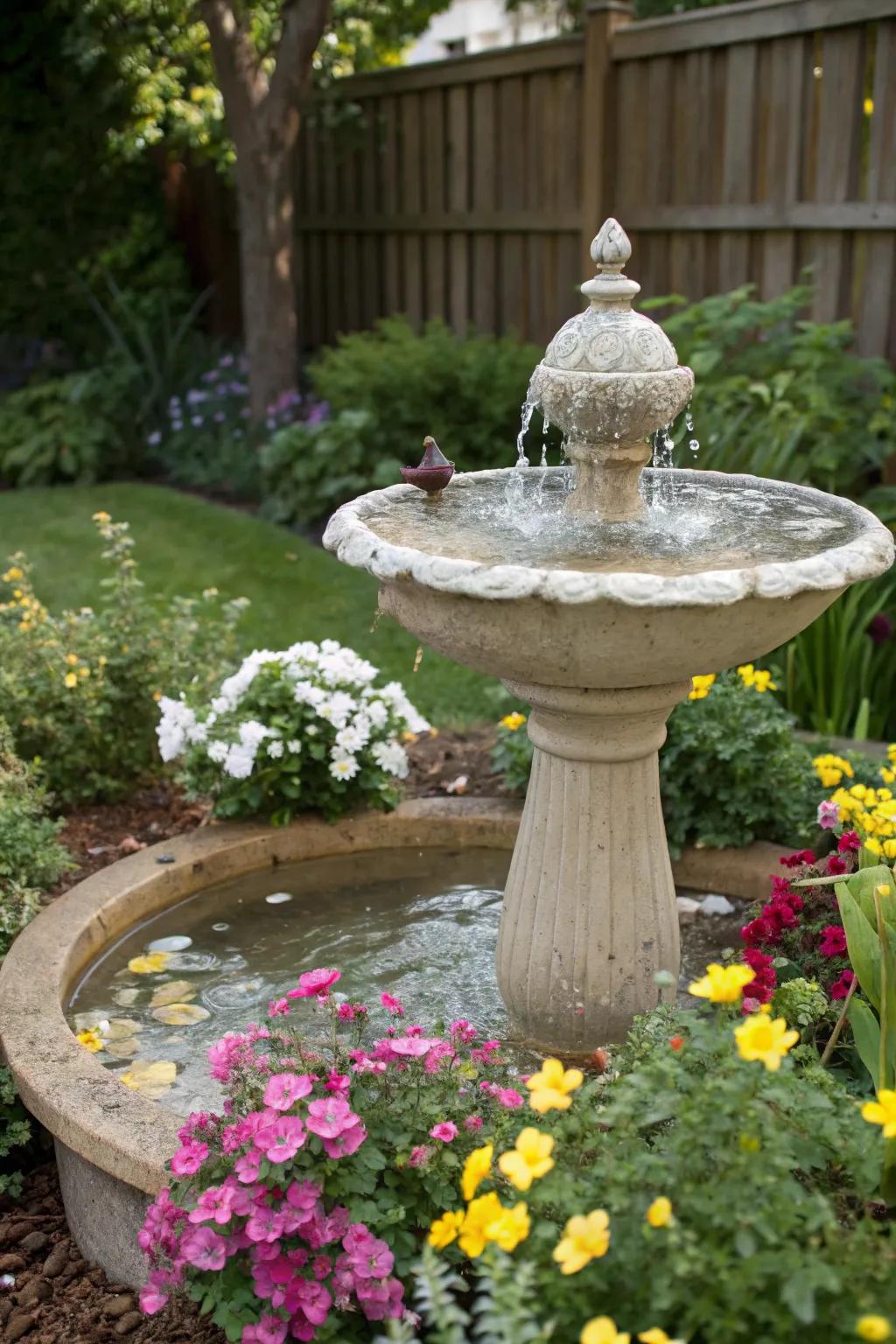
Birds love the sound of water, so adding a bubbling fountain or birdbath can make your garden irresistible. The gentle sound of water not only attracts birds but also adds a peaceful ambiance to your backyard.
A few things you might like:
- Outdoor Solar Birdbath Fountain Pump: Enhance your garden’s charm and attract birds with this eco-friendly, solar-powered fountain. Enjoy tranquility.
- Tiered Garden Water Fountain: Invite beauty and serenity into your backyard with this elegantly designed tiered water fountain.
- Ceramic Bubbling Fountain: Create a soothing atmosphere and lure birds by installing this stylish ceramic bubbling fountain.
9. Use Eco-Friendly Bird Treats

Make homemade natural bird treats using pine cones, peanut butter, and seeds. It’s a fun, eco-friendly way to feed birds and involves the whole family in the process.
Maybe worth checking out:
- Bulk Bird Seed Mix: Enhance your bird treats with a natural seed mix that attracts diverse bird species.
- Organic Peanut Butter: Opt for organic peanut butter to make healthy and delicious bird treats at home.
- Natural Jute Twine: Use eco-friendly jute twine to hang your homemade bird treats sustainably.
10. Include Evergreen Trees
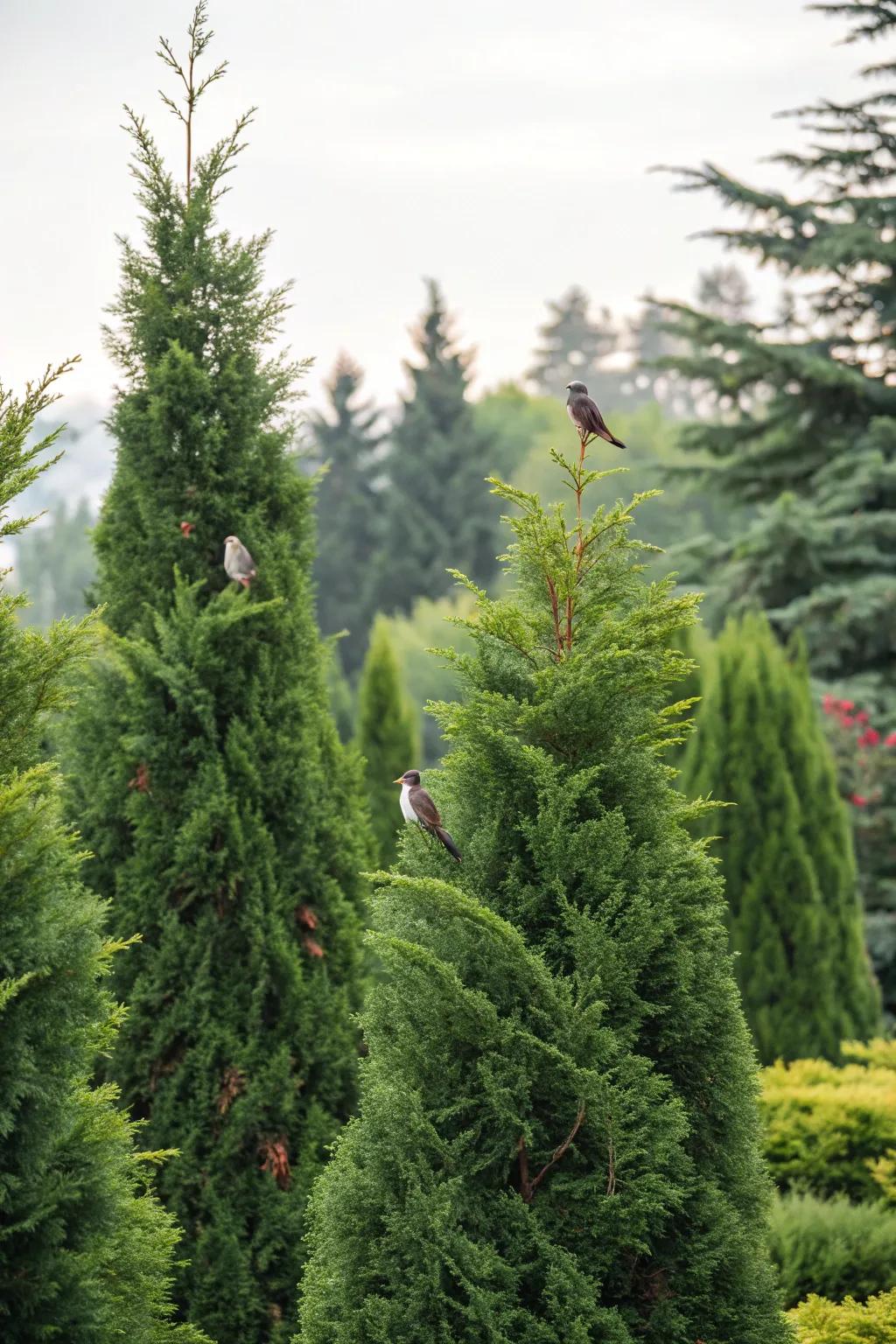
Evergreen trees provide year-round shelter and food. My spruces are a favorite with the local bird population, offering seeds and safe nesting spots.
Useful items to consider:
- Evergreen Tree Seeds: Plant spruce seeds to create a safe haven and a food source for local birds.
- Birdhouses for Evergreen Trees: Install birdhouses to provide extra shelter and encourage nesting in your evergreen trees.
- Natural Mulch for Trees: Use natural mulch to enhance soil moisture and tree health, attracting more birds.
11. Host a Birdwatching Party
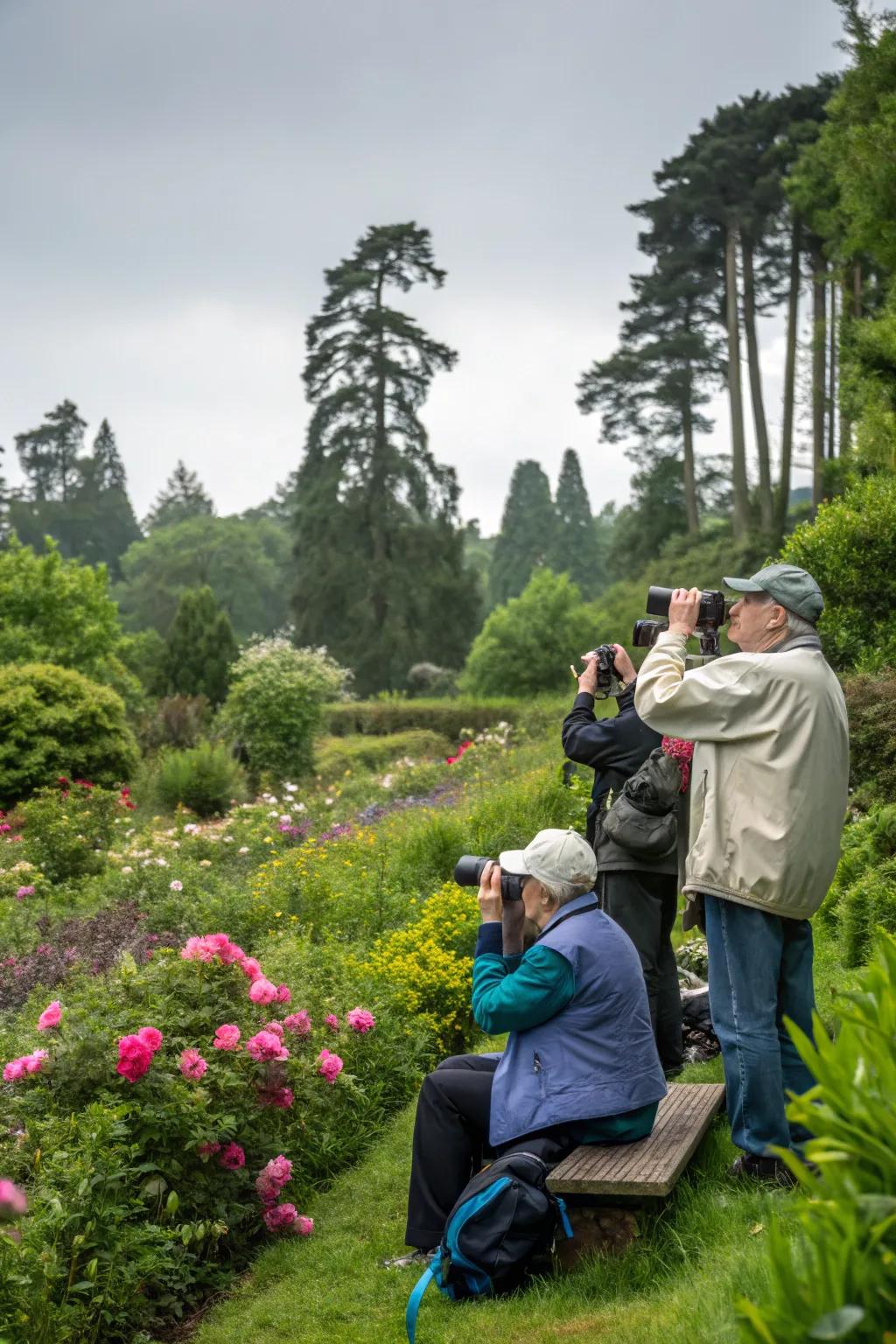
Share your love for birds by hosting a birdwatching party. Invite friends and family to enjoy the sights and sounds of your garden sanctuary, creating treasured memories together.
You might like:
- High-Quality Birdwatching Binoculars: Enhance your viewing experience with these binoculars, designed for optimal clarity and magnification.
- Bird Identification Guide Book: Identify local species easily with this comprehensive and user-friendly bird guide.
- Comfortable Outdoor Folding Chairs: Relax and enjoy nature with these portable, comfortable outdoor folding chairs.
12. Add a Bird Nesting Station
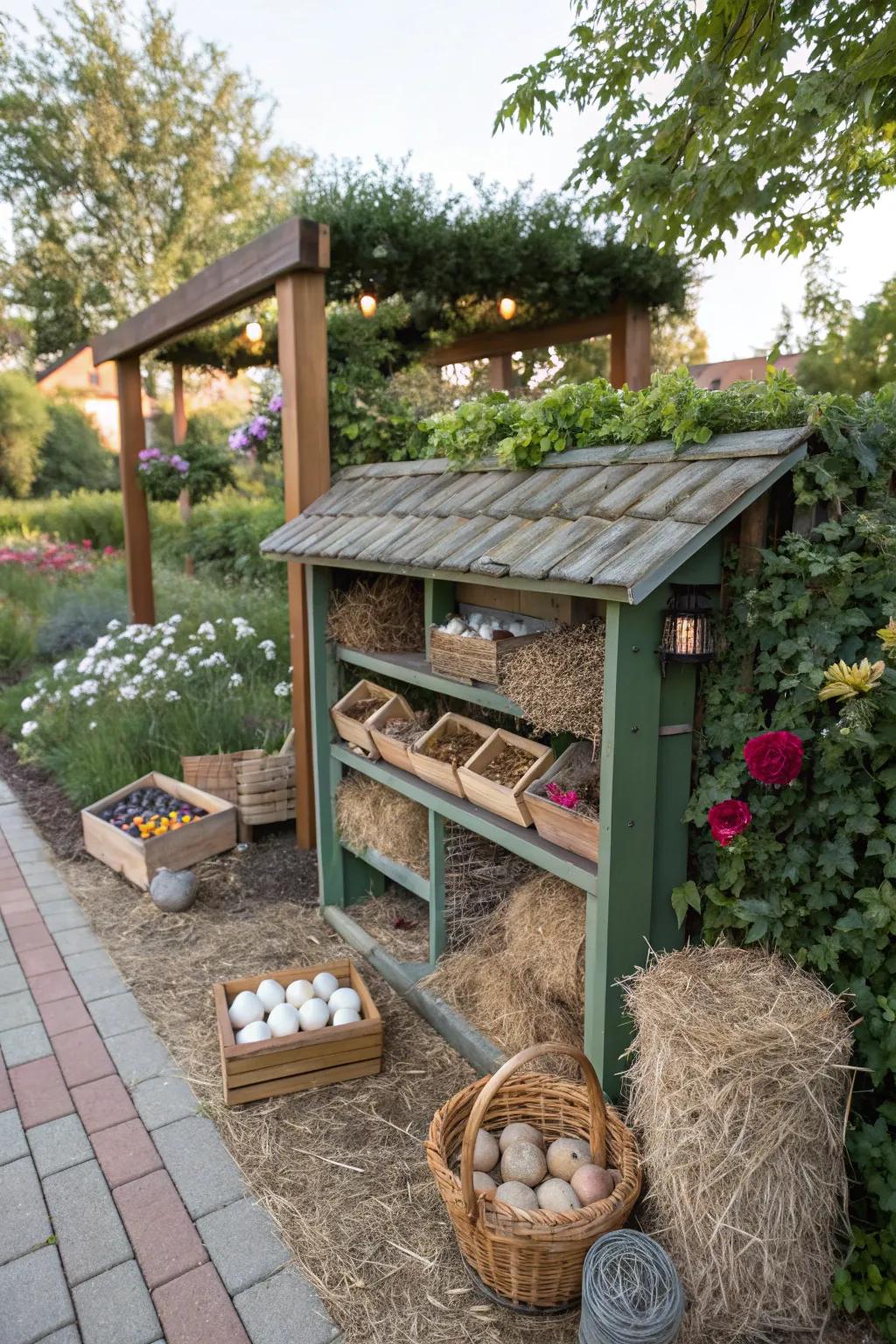
Help birds build their homes by offering a nesting material station. Fill it with natural fibers like wool and straw, and watch as birds gather supplies for their nests.
Products that could assist:
- Natural Fiber Nesting Material: Provide birds with wool and straw to help them craft cozy, natural nests. Enhance their environment!
- Bird Nesting House Organizer: Install a nesting material station to organize supplies and attract more birds. Keep it tidy!
- Bird Supply Storage Baskets: Use handy baskets to store and present nesting materials for your feathered visitors. Keep it simple!
13. Plant Berry-Producing Shrubs
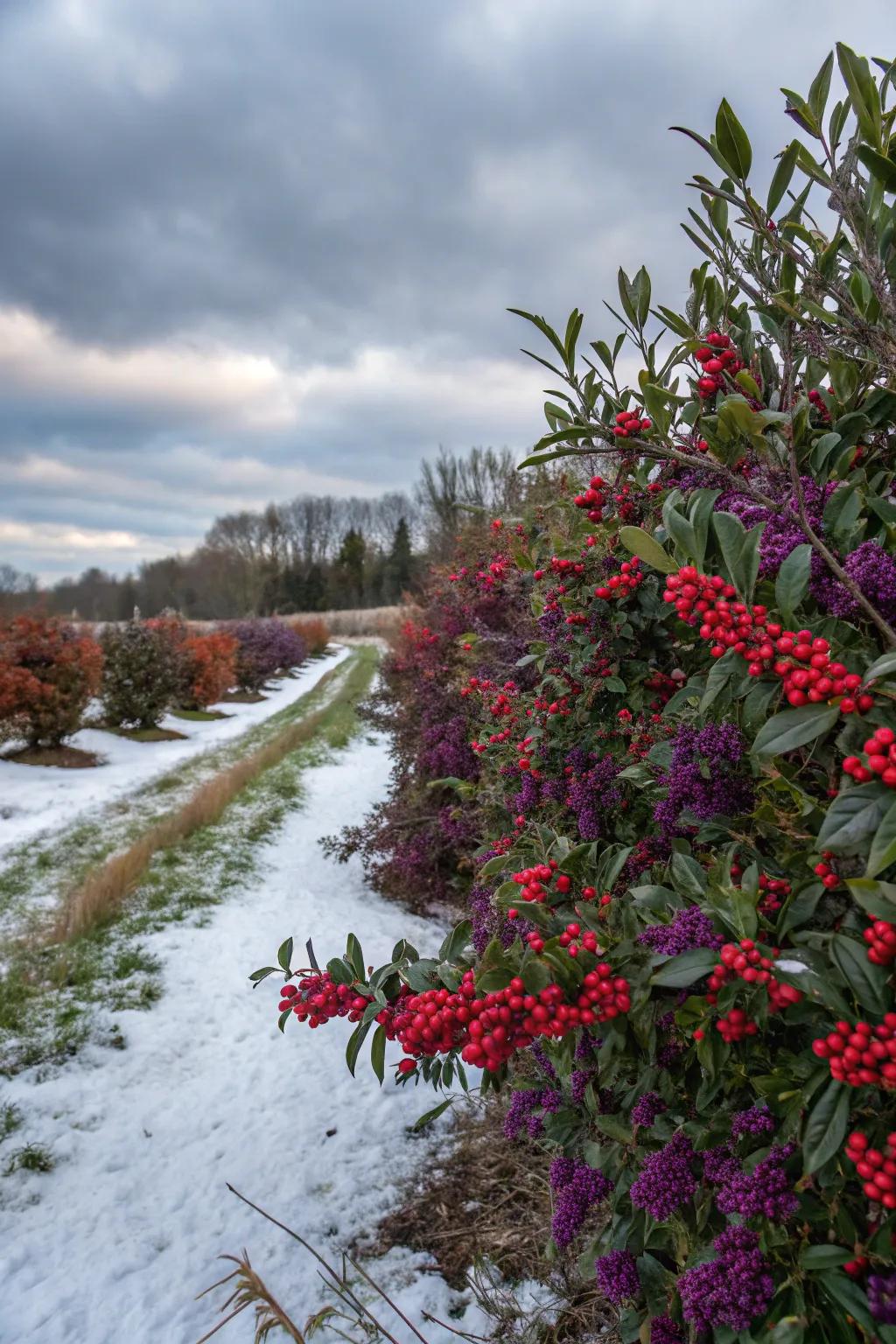
Shrubs like winterberry and chokeberry offer nutritious berries for birds, especially in winter. These plants are a hit in my garden, providing food when other sources are scarce.
Possibly helpful picks:
- Winterberry Shrub Seeds: Plant Winterberry seeds to attract birds with nutritious berries during winter months.
- Chokeberry Shrub Plants: Purchase Chokeberry plants and provide a reliable food source for birds in your garden.
- Berry Fertilizer for Shrubs: Enhance berry production with specialized fertilizer for healthy and fruitful shrubs.
14. Install a Bird Cam
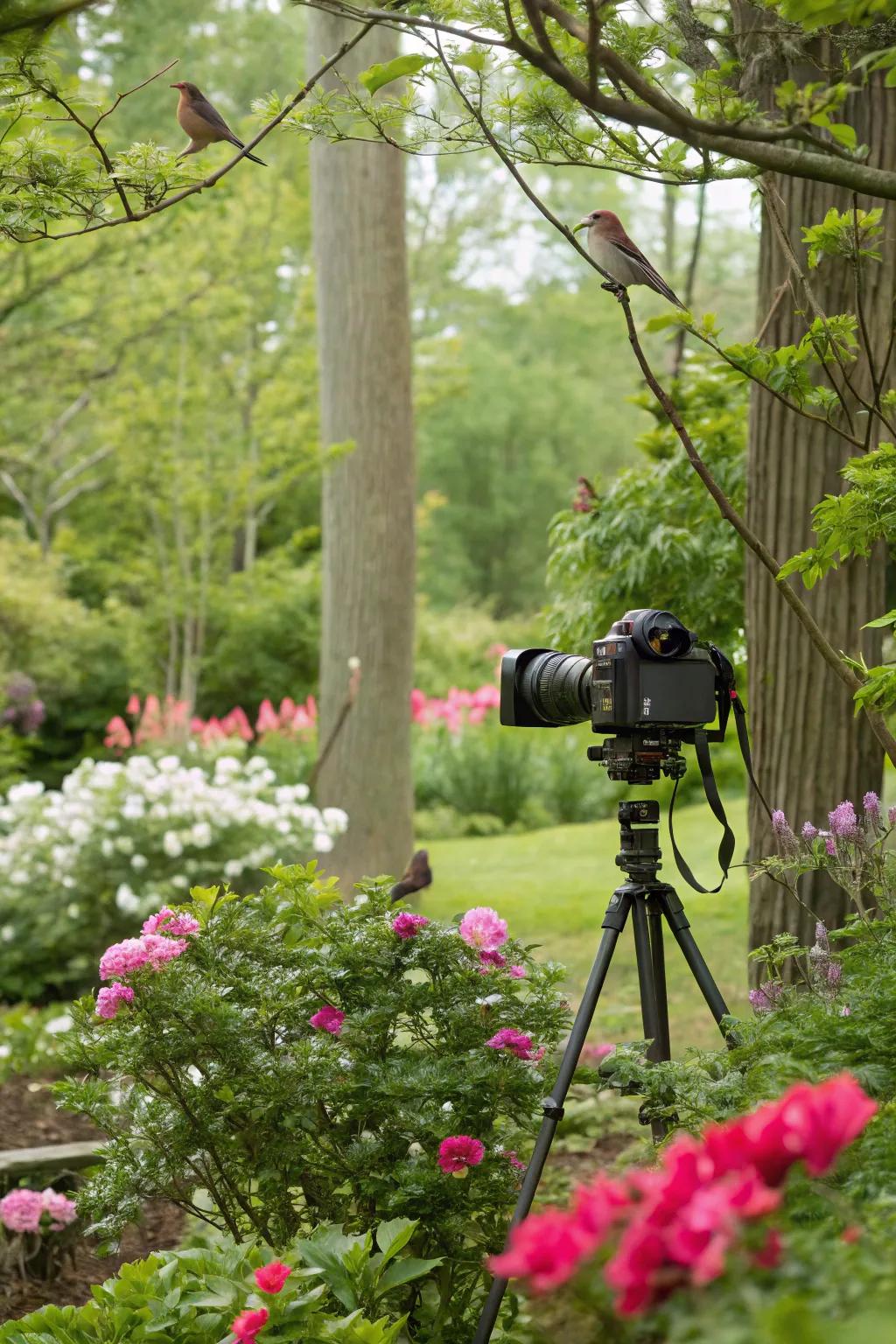
Capture the magic by setting up a bird cam. It’s an exciting way to observe and learn about the birds visiting your garden, and I love reviewing the day’s avian visitors.
These products might be useful:
- Outdoor Bird Watching Camera: Capture stunning bird footage with this easy-to-install outdoor camera for birdwatching enthusiasts.
- Camera Tripod for Outdoor Use: Stabilize your bird cam with a durable tripod, perfect for clear and steady video capture.
- Bird Feeder with Camera Mount: Combine feeding and filming with this bird feeder featuring an integrated camera mount.
